The evolution of smartphones. Part 1: 1994 - 2010 years. Version 1.1
Article Evolution of smartphones. Part 1: 1994 - 2010 received a lot of comments on the topic of missed mobile devices - as the lines of manufacturers, and specific models. I took into account these comments supplement, which will be mentioned the most interesting models that are not in the first article, and which you told in the comments.
In the comments again, please share your memories and give links to your own reviews.
If the article lacks a specific model - please write about it in the comments with the image.
')
In 2002, the Palm company, a well-known PDA manufacturer, launched its first smartphone - that is, a PDA with the ability to talk on the phone. This device has a monochrome display with a resolution of 160x160, made in a clamshell form factor. The gadget worked on a Dragonball 33 MHz processor and had 16 megabytes of internal memory.
Starting with this device, Palm has focused on the release of smartphones.
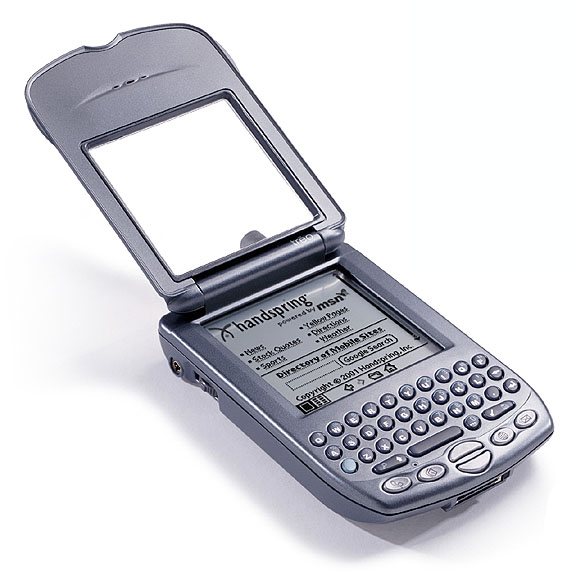


Smartphone Palm Treo 600 was released in 2003. It worked on Palm OS v5.2.1H, had 32 megabytes of memory and an SD slot. The display of the device is 2.5 inches with a resolution of 160x160, but it was touch-sensitive and showed 4096 colors. The device weighed 168 grams.

In 2003, Motorola released the MPx200 smartphone on the Microsoft Smartphone 2002 operating system. This clamshell has a 2.2-inch 9-line internal display with a resolution of 176x220 pixels, 8 megabytes of memory and support for MMC and SC up to 1 gigabyte. The resolution of the outdoor display is 80x48 pixels.

The Sony Ericsson P900 smartphone was released in 2003. This is a touchscreen gadget with a resolution of 208x320 pixels, 16 megabytes of internal memory and a Symbian 7.0 operating system. And he had a stylish flip cover that turns it folded into a push-button smartphone.

The successor to the P900 was the P910, released in 2004. The device received a full QWERTY-keyboard on the lid of the device. Memory expanded from 16 to 64 megabytes, Memory Stick Duo support up to 2 GB. The device worked on an ARM9 156 MHz processor. This model also differed from its predecessor in HTML support.
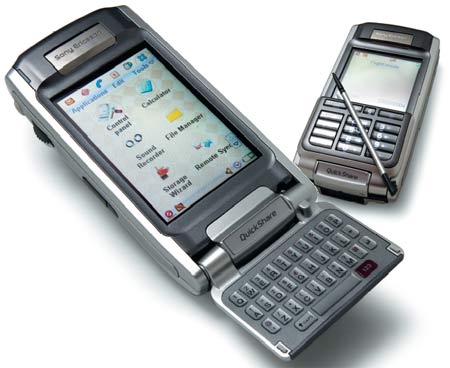
The Nokia 7710 smartphone, announced on November 2, 2004, has become one of the most memorable gadgets from this manufacturer . This was the first attempt to make a smartphone with a touch screen. The form factor was somewhat unusual - which, however, was common for that time.
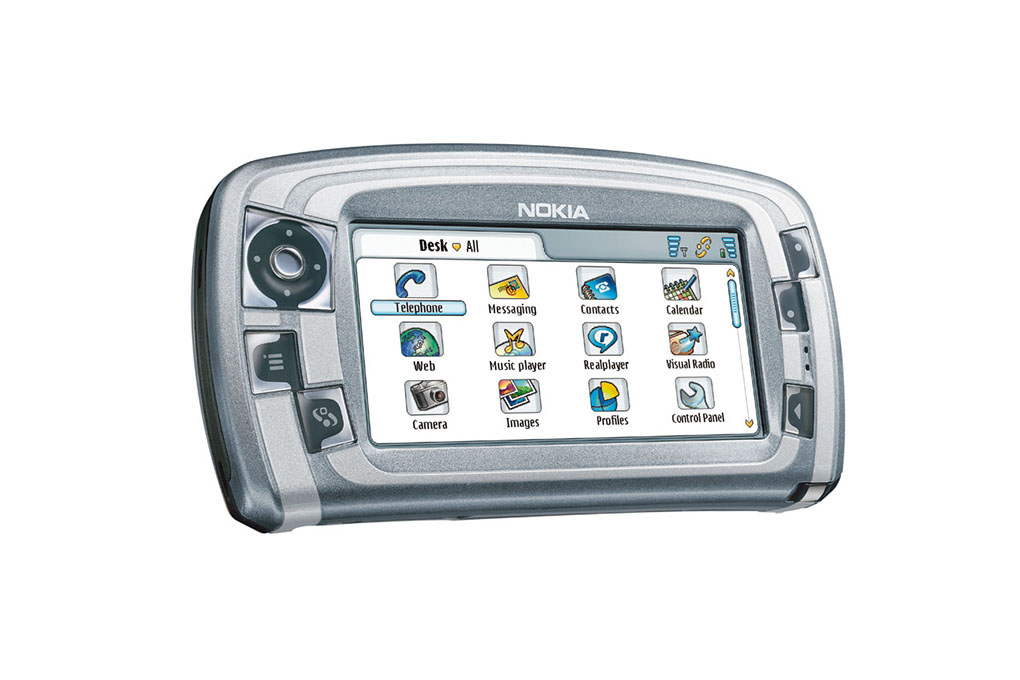
In October 2005, Nokia released the Nokia E60 - a device on Symbian OS 9.1 received 64 megabytes of built-in and RAM memory, a 2.1-inch display with a resolution of 352x416. The gadget 17 mm thick weighed 117 grams. The browser supported WAP 2.0 / xHTML and HTML.


Taiwan supplier and manufacturer of telecommunication devices E-Ten in 2005 released the Eten M600 smartphone. A device with a 2.8-inch TFT-display with a resolution of 240x320 pixels received handwriting recognition technology, 64 megabytes of RAM and 128 megabytes of built-in, 1.3 megapixel camera with LED flash. The gadget is based on a Samsung 2440 400 MHz processor. The operating system is Microsoft Windows Mobile 5.0 PocketPC.
In the 1990s, this manufacturer captured 85% of the Chinese PDA market.

In early 2006, the Sony Ericsson M600 was released on Symbian OS v9.1. The gadget received a QWERTY-keyboard, a 2.6-inch TFT-screen with a diagonal of 2.6 inches and a resolution of 240x320 pixels and software for recognizing handwriting input in English and Chinese. The processor is a 32-bit Philips Nexperia PNX4008 208 MHz. The built-in memory in the device was 64 megabytes, but it was possible to expand it with a Memory Stick Micro up to 4 GB.

The Nokia E61i smartphone came out in 2006, and a year later its follower came on the market - the Nokia E61i. The gadget supported 3G and worked on Symbian OS.
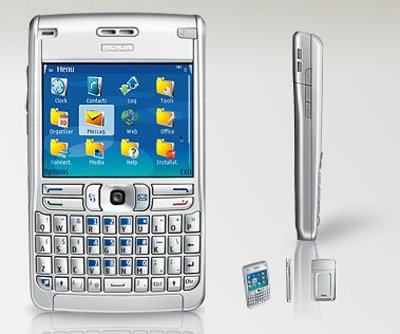
In February 2006, Samsung released the Samsung SGH-i320 - a smartphone with a QWERTY-keyboard on the operating system Microsoft Windows Mobile 5.0. The device with a 2.2-inch screen weighed only 95 grams, and its thickness was 11.5 millimeters. Very compact device.

In March 2006, Asus released the P505. This smartphone weighed 165 grams, had a 2.8-inch screen with a resolution of 240x320-pixels, a flip cover, 64 megabytes of RAM and flash memory. The gadget worked on the operating system Microsoft Windows Mobile OS for PDAs.

The smartphone on Symbian OS v9.1 Sony Ericsson W950 was released in 2006. He weighed 112 grams, body thickness - 15 millimeters. The gadget had 4 GB of internal memory. The display is 2.6 inches with a resolution of 240x320 pixels. The device supports stylus input.

Photo: 1xaoc2

In the first quarter of 2006, the Nokia 3250 went on sale. His follower was the legendary Nokia 5700 XpressMusic. The gadget received 2 gigabytes of memory, this was enough for 500 songs. And he weighed 115 grams. The device worked on Symbian OS 9.1.
In 2006, the Fujitsu Siemens Pocket LOOX T810 smartphone came out. It supported 3G, had a 2-megapixel camera, a QWERTY-keyboard and had a touchscreen display that supports stylus input.
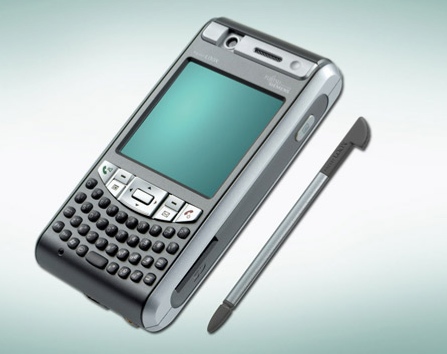
Asus P525 was released in 2007. It was a device on the MS Windows Mobile 5.0 operating system with a 2.8-inch display with a resolution of 240x320 pixels, 128 megabytes of memory, Wi-Fi and bluetooth. And a 2 megapixel camera.
A phrase from one review on this gadget: “It’s not too comfortable to carry the device in your pants pocket, and even more so a shirt. It is just great and, moreover, will pull the pocket. ”

The i-mate SP3i smartphone was built on the HTC Typhoon platform and went on sale in early 2007. This is a candybar gadget running Windows Mobile 2003 for Smartphone SE. A color screen with a resolution of 176x220 pixels displays up to 65 thousand colors. The gadget weighed 102 grams and worked on a TI OMAP 730 200 MHz processor.
The ServiceChip user remembered that this gadget didn’t even have a 3.5mm headphone jack - instead it had a 2.5mm jack with an irregular pinout, so I had to redo the headset for it from another Philips phone.

In February 2007, Toshiba launched the Toshiba G900 business smartphone. The gadget with a case thickness of 21.5 millimeters weighed 198 grams and worked on Windows Mobile 6 Professional. The device received 40 megabytes of internal memory and a slot for miniSD, 128 megabytes of RAM, a 3-inch display with a resolution of 480x800 pixels and a QWERTY-keyboard. As well as two cameras - the main 2-megapixel with LED flash and VGA for video calls.
And this gadget already had a fingerprint scanner.



In February 2007, Nokia launches the Nokia E90 3G smartphone on the Symbian operating system. This gadget looked more like a small laptop, and was revealed the same way. The first copy was sold on May 17, 2007 in Indonesia at a price of $ 5,000.
The resolution of the internal screen is 352x800 pixels.


The Sony Ericsson P1 is the successor to the P990 and the latest gadget from the P-series. It is made in the M600 form factor (it is written about it above), but in terms of functionality it was close to the P990. This device is on Symbian OS 9.1 with UIQ 3.0 interface. The gadget is slightly thicker than the M600, but thinner than the P990. The device weighs 124 grams, has a 3.2-megapixel camera with 3x zoom. The display of the gadget is 2.6 inches with a resolution of 240x320 pixels. Flash memory - 256 megabytes, of which the user was available 160 megabytes. RAM - 128 megabytes. As a nice bonus in the bundle, there was a 512 megabyte Memory Stick Micro card.
The gadget was announced on May 8, 2007.

In July 2007, the Neo 1973 smartphone was launched for sale on a platform with open and free code based on Linux - Openmoko. The device received a 2.8-inch TFT-display, touchscreen, working with finger input, and with a stylus, Samsung 266 MHz processor. RAM - 128 megabytes, built-in - 64 megabytes. Weighed a gadget 184 grams.
As a bonus - the stylus contains a laser pointer, a flashlight and a pen.

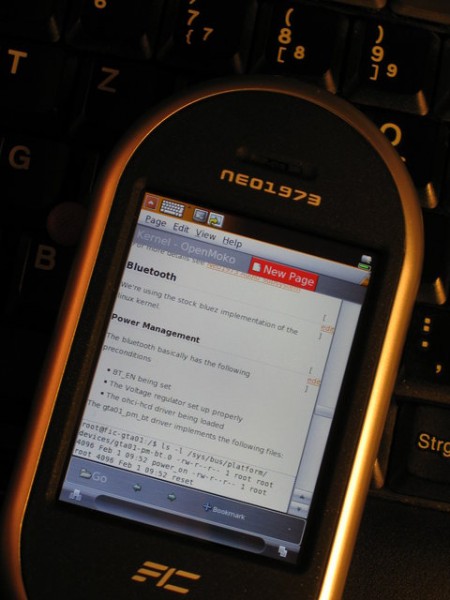

In December 2007, Palm began selling an unlocked version of the Palm Treo 750 - now it’s not just AT & T subscribers who could use it.

In 2007, HTC released Advantage on an Intel XScale PXA270 624 MHz processor. This gadget has already received 8 gigabytes of memory and 128 megabytes of operational, 5-inch display of 640x480 pixels. Then he was just gigantic. But he really weighed a lot - 400 grams.

The successor to the Neo 1973 was the 2008 Neo FreeRunner. The gadget allows you to run various OS based on Linux - Android, Debian, Gentoo, Arch Linux, GameRunner, Slackware, OpenWrt, OpenMoko, SHR, QtMoko.

In June 2008, Samsung announced the communicator in Azul WIndows Mobile Samsung SGH-i900 WiTu (Omnia). The smartphone has a 3.2-inch touchscreen TFT-display with a resolution of 240x400 pixels, 128 megabytes of RAM and 256 megabytes of internal memory, a 5 megapixel main camera with autofocus and flash.

In 2008, Palm released the latest smartphone from the Treo line. They became the Palm Treo Pro - it could boast a touchscreen display, GPS, 3.4-mm jack for headphones instead of 2.5 mm. By the way, HTC produced this smartphone, a huge number of models of which I mentioned in the last post .
The gadget screen is a 3.3-inch TFT with a resolution of 320x320. The operating system is Windows Mobile Professional 6.1.
The built-in memory of 256 megabytes could be expanded using microSDHC to 32 gigabytes.
The device had a Wi-Fi module


The Toshiba Biblio slider, released in 2009, got an interesting Morphpad keyboard: it could show either a regular phone keypad or turn into a QWERTY. The touch screen device is 3.5-inch with a resolution of 480x960 pixels. Also, the gadget had a 5 megapixel camera with autofocus and stabilization. Built-in memory - 7 gigabytes, but it was possible to expand it with microSDHC.


The HTC Desire Z smartphone has received an interesting form factor - it’s not just a side slider, but a slider that unfolds as the letter Z - from there, and the name. This device came with Android 2.2.1 "Froyo", and then received an upgrade to 2.3. This gadget had 1.5 gigabytes of flash memory and 512 megabytes of RAM, a 3.7-inch screen, a 5 megapixel camera with LED flash and face recognition.

The smartphone RoverPC Pro G7 worked on Marvell PXA310 624 MHz and Qualcomm 6280 processors, had 128 megabytes of RAM and 256 megabytes of built-in. It had a 2.8-inch touchscreen display with a resolution of 480x640 pixels. The gadget worked under the operating system Microsoft Windows Mobile 6.1 Professional. The device had 3G and Wi-Fi modules and weighed 119 grams.
One of the most interesting features of the gadget is the presence of a TV access port.


In early 2010, HTC, together with Google, released the Nexus One smartphone. It was the first device with Android 2.1, and in the summer of the same year it was updated to 2.2. Since 2011, he worked at 2.3.3. The device worked on a Qualcomm QSD 8250 Snapdragon ARM 1 GHz processor with Adreno 200, having 512 megabytes of RAM and 512 megabytes of flash memory. The gadget supported a memory card of up to 32 GB, and a 4 gigabyte card was included with the smartphone.
The device had a 3.7-inch display of 480x800 pixels, a 5-megapixel camera with flash and autofocus, support for Wi-Fi, Bluetooth and HSDPA.


In the comments again, please share your memories and give links to your own reviews.
If the article lacks a specific model - please write about it in the comments with the image.
')
Palm treo 180
In 2002, the Palm company, a well-known PDA manufacturer, launched its first smartphone - that is, a PDA with the ability to talk on the phone. This device has a monochrome display with a resolution of 160x160, made in a clamshell form factor. The gadget worked on a Dragonball 33 MHz processor and had 16 megabytes of internal memory.
Starting with this device, Palm has focused on the release of smartphones.



Palm treo 600
Smartphone Palm Treo 600 was released in 2003. It worked on Palm OS v5.2.1H, had 32 megabytes of memory and an SD slot. The display of the device is 2.5 inches with a resolution of 160x160, but it was touch-sensitive and showed 4096 colors. The device weighed 168 grams.

Motorola MPx200
In 2003, Motorola released the MPx200 smartphone on the Microsoft Smartphone 2002 operating system. This clamshell has a 2.2-inch 9-line internal display with a resolution of 176x220 pixels, 8 megabytes of memory and support for MMC and SC up to 1 gigabyte. The resolution of the outdoor display is 80x48 pixels.

Sony Ericsson P900
The Sony Ericsson P900 smartphone was released in 2003. This is a touchscreen gadget with a resolution of 208x320 pixels, 16 megabytes of internal memory and a Symbian 7.0 operating system. And he had a stylish flip cover that turns it folded into a push-button smartphone.

Sony Ericsson P910
The successor to the P900 was the P910, released in 2004. The device received a full QWERTY-keyboard on the lid of the device. Memory expanded from 16 to 64 megabytes, Memory Stick Duo support up to 2 GB. The device worked on an ARM9 156 MHz processor. This model also differed from its predecessor in HTML support.

Nokia 7710
The Nokia 7710 smartphone, announced on November 2, 2004, has become one of the most memorable gadgets from this manufacturer . This was the first attempt to make a smartphone with a touch screen. The form factor was somewhat unusual - which, however, was common for that time.

Nokia E60
In October 2005, Nokia released the Nokia E60 - a device on Symbian OS 9.1 received 64 megabytes of built-in and RAM memory, a 2.1-inch display with a resolution of 352x416. The gadget 17 mm thick weighed 117 grams. The browser supported WAP 2.0 / xHTML and HTML.


Eten M600
Taiwan supplier and manufacturer of telecommunication devices E-Ten in 2005 released the Eten M600 smartphone. A device with a 2.8-inch TFT-display with a resolution of 240x320 pixels received handwriting recognition technology, 64 megabytes of RAM and 128 megabytes of built-in, 1.3 megapixel camera with LED flash. The gadget is based on a Samsung 2440 400 MHz processor. The operating system is Microsoft Windows Mobile 5.0 PocketPC.
In the 1990s, this manufacturer captured 85% of the Chinese PDA market.

Sony Ericsson M600
In early 2006, the Sony Ericsson M600 was released on Symbian OS v9.1. The gadget received a QWERTY-keyboard, a 2.6-inch TFT-screen with a diagonal of 2.6 inches and a resolution of 240x320 pixels and software for recognizing handwriting input in English and Chinese. The processor is a 32-bit Philips Nexperia PNX4008 208 MHz. The built-in memory in the device was 64 megabytes, but it was possible to expand it with a Memory Stick Micro up to 4 GB.

Nokia E61
The Nokia E61i smartphone came out in 2006, and a year later its follower came on the market - the Nokia E61i. The gadget supported 3G and worked on Symbian OS.

Samsung SGH-i320
In February 2006, Samsung released the Samsung SGH-i320 - a smartphone with a QWERTY-keyboard on the operating system Microsoft Windows Mobile 5.0. The device with a 2.2-inch screen weighed only 95 grams, and its thickness was 11.5 millimeters. Very compact device.

Asus p505
In March 2006, Asus released the P505. This smartphone weighed 165 grams, had a 2.8-inch screen with a resolution of 240x320-pixels, a flip cover, 64 megabytes of RAM and flash memory. The gadget worked on the operating system Microsoft Windows Mobile OS for PDAs.

Sony Ericsson W950
The smartphone on Symbian OS v9.1 Sony Ericsson W950 was released in 2006. He weighed 112 grams, body thickness - 15 millimeters. The gadget had 4 GB of internal memory. The display is 2.6 inches with a resolution of 240x320 pixels. The device supports stylus input.

Photo: 1xaoc2

Nokia 3250
In the first quarter of 2006, the Nokia 3250 went on sale. His follower was the legendary Nokia 5700 XpressMusic. The gadget received 2 gigabytes of memory, this was enough for 500 songs. And he weighed 115 grams. The device worked on Symbian OS 9.1.
Fujitsu Siemens Pocket LOOX T810
In 2006, the Fujitsu Siemens Pocket LOOX T810 smartphone came out. It supported 3G, had a 2-megapixel camera, a QWERTY-keyboard and had a touchscreen display that supports stylus input.

Asus p525
Asus P525 was released in 2007. It was a device on the MS Windows Mobile 5.0 operating system with a 2.8-inch display with a resolution of 240x320 pixels, 128 megabytes of memory, Wi-Fi and bluetooth. And a 2 megapixel camera.
A phrase from one review on this gadget: “It’s not too comfortable to carry the device in your pants pocket, and even more so a shirt. It is just great and, moreover, will pull the pocket. ”

i-mate SP3i
The i-mate SP3i smartphone was built on the HTC Typhoon platform and went on sale in early 2007. This is a candybar gadget running Windows Mobile 2003 for Smartphone SE. A color screen with a resolution of 176x220 pixels displays up to 65 thousand colors. The gadget weighed 102 grams and worked on a TI OMAP 730 200 MHz processor.
The ServiceChip user remembered that this gadget didn’t even have a 3.5mm headphone jack - instead it had a 2.5mm jack with an irregular pinout, so I had to redo the headset for it from another Philips phone.

Toshiba Portege G900
In February 2007, Toshiba launched the Toshiba G900 business smartphone. The gadget with a case thickness of 21.5 millimeters weighed 198 grams and worked on Windows Mobile 6 Professional. The device received 40 megabytes of internal memory and a slot for miniSD, 128 megabytes of RAM, a 3-inch display with a resolution of 480x800 pixels and a QWERTY-keyboard. As well as two cameras - the main 2-megapixel with LED flash and VGA for video calls.
And this gadget already had a fingerprint scanner.



Nokia E90 Communicator
In February 2007, Nokia launches the Nokia E90 3G smartphone on the Symbian operating system. This gadget looked more like a small laptop, and was revealed the same way. The first copy was sold on May 17, 2007 in Indonesia at a price of $ 5,000.
The resolution of the internal screen is 352x800 pixels.


Sony Ericsson P1
The Sony Ericsson P1 is the successor to the P990 and the latest gadget from the P-series. It is made in the M600 form factor (it is written about it above), but in terms of functionality it was close to the P990. This device is on Symbian OS 9.1 with UIQ 3.0 interface. The gadget is slightly thicker than the M600, but thinner than the P990. The device weighs 124 grams, has a 3.2-megapixel camera with 3x zoom. The display of the gadget is 2.6 inches with a resolution of 240x320 pixels. Flash memory - 256 megabytes, of which the user was available 160 megabytes. RAM - 128 megabytes. As a nice bonus in the bundle, there was a 512 megabyte Memory Stick Micro card.
The gadget was announced on May 8, 2007.

Neo 1973
In July 2007, the Neo 1973 smartphone was launched for sale on a platform with open and free code based on Linux - Openmoko. The device received a 2.8-inch TFT-display, touchscreen, working with finger input, and with a stylus, Samsung 266 MHz processor. RAM - 128 megabytes, built-in - 64 megabytes. Weighed a gadget 184 grams.
As a bonus - the stylus contains a laser pointer, a flashlight and a pen.



Palm Treo 750
In December 2007, Palm began selling an unlocked version of the Palm Treo 750 - now it’s not just AT & T subscribers who could use it.

HTC Advantage
In 2007, HTC released Advantage on an Intel XScale PXA270 624 MHz processor. This gadget has already received 8 gigabytes of memory and 128 megabytes of operational, 5-inch display of 640x480 pixels. Then he was just gigantic. But he really weighed a lot - 400 grams.

Neo FreeRunner
The successor to the Neo 1973 was the 2008 Neo FreeRunner. The gadget allows you to run various OS based on Linux - Android, Debian, Gentoo, Arch Linux, GameRunner, Slackware, OpenWrt, OpenMoko, SHR, QtMoko.

Samsung SGH-i900 WiTu (Omnia)
In June 2008, Samsung announced the communicator in Azul WIndows Mobile Samsung SGH-i900 WiTu (Omnia). The smartphone has a 3.2-inch touchscreen TFT-display with a resolution of 240x400 pixels, 128 megabytes of RAM and 256 megabytes of internal memory, a 5 megapixel main camera with autofocus and flash.

Palm treo pro
In 2008, Palm released the latest smartphone from the Treo line. They became the Palm Treo Pro - it could boast a touchscreen display, GPS, 3.4-mm jack for headphones instead of 2.5 mm. By the way, HTC produced this smartphone, a huge number of models of which I mentioned in the last post .
The gadget screen is a 3.3-inch TFT with a resolution of 320x320. The operating system is Windows Mobile Professional 6.1.
The built-in memory of 256 megabytes could be expanded using microSDHC to 32 gigabytes.
The device had a Wi-Fi module


Toshiba Biblio
The Toshiba Biblio slider, released in 2009, got an interesting Morphpad keyboard: it could show either a regular phone keypad or turn into a QWERTY. The touch screen device is 3.5-inch with a resolution of 480x960 pixels. Also, the gadget had a 5 megapixel camera with autofocus and stabilization. Built-in memory - 7 gigabytes, but it was possible to expand it with microSDHC.


HTC Desire Z
The HTC Desire Z smartphone has received an interesting form factor - it’s not just a side slider, but a slider that unfolds as the letter Z - from there, and the name. This device came with Android 2.2.1 "Froyo", and then received an upgrade to 2.3. This gadget had 1.5 gigabytes of flash memory and 512 megabytes of RAM, a 3.7-inch screen, a 5 megapixel camera with LED flash and face recognition.

RoverPC Pro G7
The smartphone RoverPC Pro G7 worked on Marvell PXA310 624 MHz and Qualcomm 6280 processors, had 128 megabytes of RAM and 256 megabytes of built-in. It had a 2.8-inch touchscreen display with a resolution of 480x640 pixels. The gadget worked under the operating system Microsoft Windows Mobile 6.1 Professional. The device had 3G and Wi-Fi modules and weighed 119 grams.
One of the most interesting features of the gadget is the presence of a TV access port.


Nexus one
In early 2010, HTC, together with Google, released the Nexus One smartphone. It was the first device with Android 2.1, and in the summer of the same year it was updated to 2.2. Since 2011, he worked at 2.3.3. The device worked on a Qualcomm QSD 8250 Snapdragon ARM 1 GHz processor with Adreno 200, having 512 megabytes of RAM and 512 megabytes of flash memory. The gadget supported a memory card of up to 32 GB, and a 4 gigabyte card was included with the smartphone.
The device had a 3.7-inch display of 480x800 pixels, a 5-megapixel camera with flash and autofocus, support for Wi-Fi, Bluetooth and HSDPA.


Source: https://habr.com/ru/post/391911/
All Articles